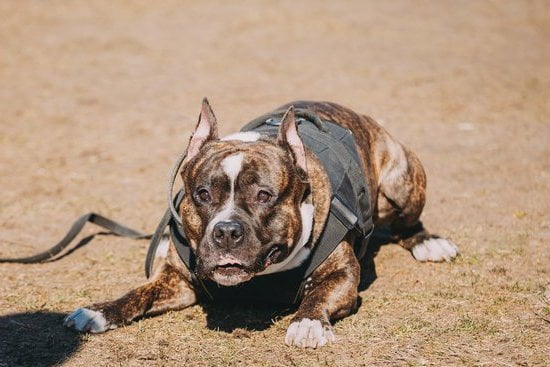As our beloved canine companions age, it’s not uncommon for them to develop a special affinity for the couch. In this article, we will delve into how to train old dogs to stay off the couch by understanding their behavior and implementing effective training techniques.
Old dogs may find comfort on the couch due to a variety of reasons, such as seeking warmth, relaxation, or simply wanting to be close to their human family members. However, allowing them unrestricted access can lead to a range of negative consequences.
The allure of the couch for old dogs can pose challenges for pet owners, including hygiene concerns, potential damage to furniture, and even behavioral issues. Establishing clear boundaries is crucial in maintaining a harmonious relationship with your aging pet. By setting rules and providing a comfortable alternative, you can gently guide your old dog away from the couch while ensuring their well-being and happiness.
Training an old dog to stay off the couch requires patience, consistency, and positive reinforcement. By rewarding desired behaviors and redirecting unwanted ones, you can effectively communicate expectations to your furry friend.
Creating a routine that includes exercise and mental stimulation is essential for promoting good behavior and overall health in older dogs. Remember that setbacks may occur during the training process, but staying patient and seeking professional help when needed can lead to successful results in keeping your senior pup off the couch.
The Negative Effects of Allowing Dogs on the Couch
Allowing dogs, especially older ones, on the couch may seem harmless at first, but it can have several negative effects on both your dog and your household. One of the primary concerns is hygiene, as dogs carry dirt, bacteria, and allergens that can transfer to your furniture. This not only poses health risks for you and your family but also leads to more frequent cleaning and maintenance of the couch.
Moreover, permitting your old dog on the couch blurs the lines of hierarchy within your home. Dogs are pack animals and thrive in environments with clear leadership. Allowing them on furniture meant for humans can signal to them that they hold a higher status than they should. This can result in behavioral issues such as aggression or disobedience as your furry companion may become more assertive due to this perceived elevation in rank.
To address these negative effects and provide a comfortable environment for both you and your dog, it is essential to establish boundaries early on. By using positive reinforcement techniques such as treats, praise, or toys, you can effectively train old dogs to stay off the couch. Consistency in enforcing this rule is key to success, as dogs respond well to routine and clear expectations from their owners.
| Effects of Allowing Dogs on Couch | Why It Matters |
|---|---|
| Hygiene concerns | Risk of health issues for humans and pets; increased cleaning efforts |
| Hierarchy confusion | Potential behavior problems due to lack of clear leadership in the home |
Tips for Setting Boundaries With an Old Dog
As much as we love our furry companions, it’s important to set boundaries with them, especially when it comes to keeping them off the couch. Old dogs may have developed a habit of lounging on the couch over the years, but with patience and consistency, you can successfully train them to stay off. Here are some tips on how to do so:
- Start by gently but firmly establishing rules: Old dogs are creatures of habit, so it’s crucial to be consistent in your expectations. Use clear commands such as “off” or “down” whenever your dog tries to jump on the couch.
- Provide alternative comfortable spots: Create a cozy bed or designated area for your old dog to rest in. Make sure this spot is appealing and comfortable by adding their favorite blankets or toys.
- Use positive reinforcement: Reward your old dog with treats, praise, or belly rubs when they obey your commands and stay off the couch. Positive reinforcement will help reinforce good behavior.
Old dogs may struggle initially with breaking the habit of jumping on the couch, but with patience and persistence, you can teach them to respect your boundaries. Remember that consistency is key in training your old dog, so remain firm yet gentle in enforcing the rules. By creating a comfortable alternative for your pet, using positive reinforcement, and being patient through setbacks, you can successfully train your old dog to stay off the couch.
Creating a Comfortable Alternative for Your Dog
As pet owners, it’s essential to remember that our old dogs are creatures of habit and comfort. While they may have developed a strong attachment to lounging on the couch over the years, creating a comfortable alternative for them is paramount in successfully training them to stay off the furniture. By providing your furry companion with a cozy and inviting spot of their own, you can make the transition smoother and more appealing for them.
To help your old dog adjust to their new designated area, consider incorporating the following strategies:
- Invest in a supportive dog bed that caters to your dog’s specific needs, such as orthopedic beds for joint pain relief or heated beds for added warmth during colder seasons.
- Place the dog bed in a quiet and peaceful corner of your home where they can relax without feeling isolated from family activities.
- Enhance the area with familiar scents by placing some of their favorite toys or blankets nearby to make them feel secure and comfortable.
By establishing a designated space that offers comfort, security, and familiarity, you can help your old dog gradually shift their preference from the couch to their own special spot. This approach allows you to redirect their behavior positively while ensuring they still have a cozy retreat where they feel safe and content.
Additionally, incorporating positive reinforcement techniques when your old dog chooses to rest on their designated bed instead of the couch can further reinforce this behavior. Rewarding them with treats, praise, or affection whenever they follow the desired behavior will encourage them to continue making the right choice. Remember that consistency is key in this process-celebrate small victories and be patient as your old dog learns this new routine.
Using Positive Reinforcement to Train Your Old Dog
Older dogs, just like puppies, can benefit greatly from positive reinforcement training methods. By using rewards to encourage desirable behavior and ignoring or redirecting unwanted behaviors, you can effectively teach your old dog to stay off the couch. Positive reinforcement is a gentle and effective way to communicate with your furry companion, fostering a strong bond built on trust and respect.
Choosing the Right Rewards
When it comes to positive reinforcement training, it’s essential to find out what motivates your old dog. This could be in the form of treats, verbal praise, toys, or even a belly rub. Experiment with different types of rewards to see what gets your dog excited and eager to please. Remember that consistency is key – always reward your dog immediately after they display the desired behavior to reinforce the connection between the action and the reward.
Setting Clear Expectations
To successfully train your old dog to stay off the couch, it’s crucial to establish clear boundaries and communicate them effectively. Use simple commands such as “off” or “down” whenever your dog attempts to climb onto the couch.
Be patient and consistent in enforcing these boundaries, and make sure that all family members are on board with the rules. With time and practice, your old dog will learn what is expected of them and will respond positively to your guidance.
Consistency Is Key
Older dogs tend to have well-established habits and routines, which can make it challenging to train them to stay off the couch. However, consistency is key when it comes to establishing new behaviors in any dog, regardless of their age. By creating a routine and sticking to it diligently, you can effectively teach your old dog to respect boundaries and avoid lounging on the couch.
One important aspect of consistency when training an old dog to stay off the couch is setting clear rules and consistently enforcing them. Dogs thrive on structure and boundaries, so it’s essential to communicate clearly what behavior is not allowed.
This means ensuring that everyone in the household is on the same page and enforces the rules consistently. If one family member allows the dog on the couch while another doesn’t, it can confuse your furry friend and make training much more difficult.
In addition to setting clear rules, consistency also involves providing positive reinforcement for good behavior and redirecting unwanted behavior. When your old dog chooses to lie on their designated bed or mat instead of the couch, be sure to reward them with verbal praise, treats, or belly rubs. This positive reinforcement will help your dog understand that staying off the couch leads to rewards, making them more likely to repeat this desirable behavior in the future.
| Training Old Dogs | Consistency in Routine |
|---|---|
| Setting clear rules | Effectively teach your old dog |
| Positive reinforcement | Reward good behavior consistently |
Dealing With Setbacks and How to Stay Patient
Older dogs can be set in their ways, making it challenging to break the habit of jumping on the couch. Even with consistent training and positive reinforcement, setbacks are bound to happen. It’s essential to stay patient and remain calm throughout the process.
Understanding Setbacks and Reasons Behind Them
Setbacks in training old dogs to stay off the couch can occur due to various reasons. Some dogs may revert to old habits when they feel anxious or insecure, while others may simply forget the rules when they get excited. Understanding these triggers can help you address them more effectively.
Patience Is Key in Training an Older Dog
Training an older dog requires patience and consistency. Remember that old habits die hard, and it may take time for your furry companion to fully grasp the new rules. Avoid scolding or punishing your dog for setbacks, as this can lead to confusion and anxiety. Instead, use positive reinforcement techniques to motivate good behavior.
Staying Persistent and Positive
Consistency is crucial when training your old dog to stay off the couch. Stick to a routine, provide ample exercise and mental stimulation, and continue praising and rewarding desirable behavior. Stay positive throughout the process, celebrate small victories, and remember that every step towards success is worth celebrating. By remaining patient and persistent, you can help your old dog learn to respect boundaries and enjoy their comfortable alternative spot instead of the couch.
The Importance of Exercise and Mental Stimulation for Older Dogs
As dogs age, it becomes even more crucial to ensure they are receiving adequate exercise and mental stimulation to keep them healthy and happy. Just like humans, older dogs may start to experience physical and cognitive decline, which can be helped by engaging in regular physical activity and mental exercises. Exercise not only helps maintain muscle strength and joint health but also keeps the mind sharp and reduces behavioral issues such as anxiety or aggressiveness.
When it comes to exercise for old dogs, it’s important to tailor the activities to their individual needs. Low-impact exercises such as short walks, swimming, or gentle play sessions can be beneficial for older dogs with arthritis or mobility issues.
Mental stimulation is equally important, as it helps prevent cognitive decline and keeps your dog’s brain sharp. Activities like puzzle toys, scent games, or obedience training can provide mental challenges that keep your senior dog engaged and stimulated.
Incorporating both physical exercise and mental stimulation into your old dog’s daily routine can have a significant impact on their overall well-being. Not only does it help maintain their physical health, but it also contributes to their mental wellness by keeping them mentally active and fulfilled.
As you work on training your old dog to stay off the couch, remember that a combination of exercise and mental stimulation will not only benefit their behavior but also their quality of life in their golden years.
Seeking Professional Help if Training Becomes Challenging
As much as we adore our furry companions, sometimes their love for our couches can cause frustration and inconvenience. Understanding why old dogs are drawn to the couch is the first step in addressing this behavior. From seeking warmth and comfort to simply wanting to be close to their owners, various reasons contribute to this habit. However, it is essential to remember the negative effects of allowing dogs on the couch, including hygiene concerns and potential behavior issues.
Setting boundaries with an old dog may seem challenging, but with patience and consistency, it is achievable. Providing a comfortable alternative such as a cozy pet bed or blanket can help redirect your dog’s attention away from the couch.
Using positive reinforcement techniques like treats and praise can also encourage your old dog to stay off the furniture. Remember that training takes time, so establishing a routine and sticking to it is crucial in successfully teaching your dog new habits.
Despite your best efforts, setbacks may occur during the training process. It is important to remain patient and consistent, avoiding punishment as this can lead to confusion and stress for your dog.
Alongside training, ensuring that your old dog receives enough exercise and mental stimulation is vital for their overall well-being. If you find that training becomes particularly challenging or overwhelming, do not hesitate to seek professional help from a certified dog trainer or behaviorist who can provide tailored guidance for you and your canine companion in learning how to train old dogs to stay off the couch.
Frequently Asked Questions
How Do I Keep My Older Dog Off the Couch?
Keeping your older dog off the couch can be achieved by providing alternative comfortable resting spots for them, such as a cozy dog bed or blanket. Consistency is key – redirect them to their own space whenever they attempt to climb onto the couch.
How Do I Train My Dog Not to Sit on the Couch Anymore?
Training your dog not to sit on the couch anymore requires patience and positive reinforcement. Start by teaching them basic commands like “off” when they attempt to jump on the couch. Reward them with treats and praise when they listen and stay off the furniture.
How Do You Train an Older Dog to Sit and Stay?
Training an older dog to sit and stay involves breaking down the process into manageable steps. Use treats as motivation and practice in a quiet environment free of distractions. Be patient and offer plenty of encouragement while reinforcing good behavior with rewards. Gradually increase the duration of sitting and staying commands as your dog becomes more comfortable with them.

Welcome to the blog! I am a professional dog trainer and have been working with dogs for many years. In this blog, I will be discussing various topics related to dog training, including tips, tricks, and advice. I hope you find this information helpful and informative. Thanks for reading!





